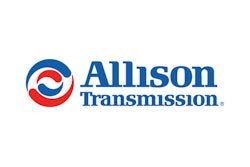IC Bus LLC announces it now offers the Allison Transmission FuelSense fuel-efficiency package standard on its IC Bus products. FuelSense automatically adapts shift schedules and torque to maximize transmission efficiency based on load, grade and duty cycle, without sacrificing performance. According to internal testing conducted by Allison, FuelSense cuts fuel consumption by up to 20% depending on duty cycle and application.
“Fuel economy improvement is increasingly important to our school bus customers and we are excited to offer FuelSense as an option,” says Trish Reed, Vice President and General Manager, IC Bus. “Paired with the Cummins ISB 6.7-liter engine with SCR or the MaxxForce DT, FuelSense maximizes transmission efficiency to drive fuel savings while also supporting start and stop duty cycles.”
IC Bus school buses are now available with FuelSense Basic in the Allison 1000 and 2000 Series transmissions paired with either the Cummins ISB 6.7-liter engine or the MaxxForce DT engine. The company will offer FuelSense Plus and Max as optional packages beginning in the spring of 2015.
Allison Transmission FuelSense
FuelSense is available in Allison’s 1000, 2000, 3000 and 4000 series transmissions. Features are incorporated in part or completely in three levels: FuelSense Basic, FuelSense Plus and FuelSense Max. All features are available in the 3000 and heavy-duty 4000 series and will be available in the 1000 and 2000 series transmissions in next year.
Features:
-
Fifth Generation smart controls, acceleration management, and a precision inclinometer
-
EcoCal shift technology to keep engine speed at the most efficient level
-
Dynamic Shift Sensing to automatically sense when low-engine speed shifts can be made
-
Neutral at Stop eliminates the load on the engine when the vehicle is stopped to reduce non-productive fuel consumption and reduce emissions
-
Acceleration Rate Management relegates engine power to match acceleration curves and control engine torque

















![Sa P75 I Sahr[80]](https://img.oemoffhighway.com/mindful/acbm/workspaces/default/uploads/2025/10/sa-p75-isahr80.Cn3n79HB4H.jpg?ar=16%3A9&auto=format%2Ccompress&fit=crop&h=135&q=70&w=240)